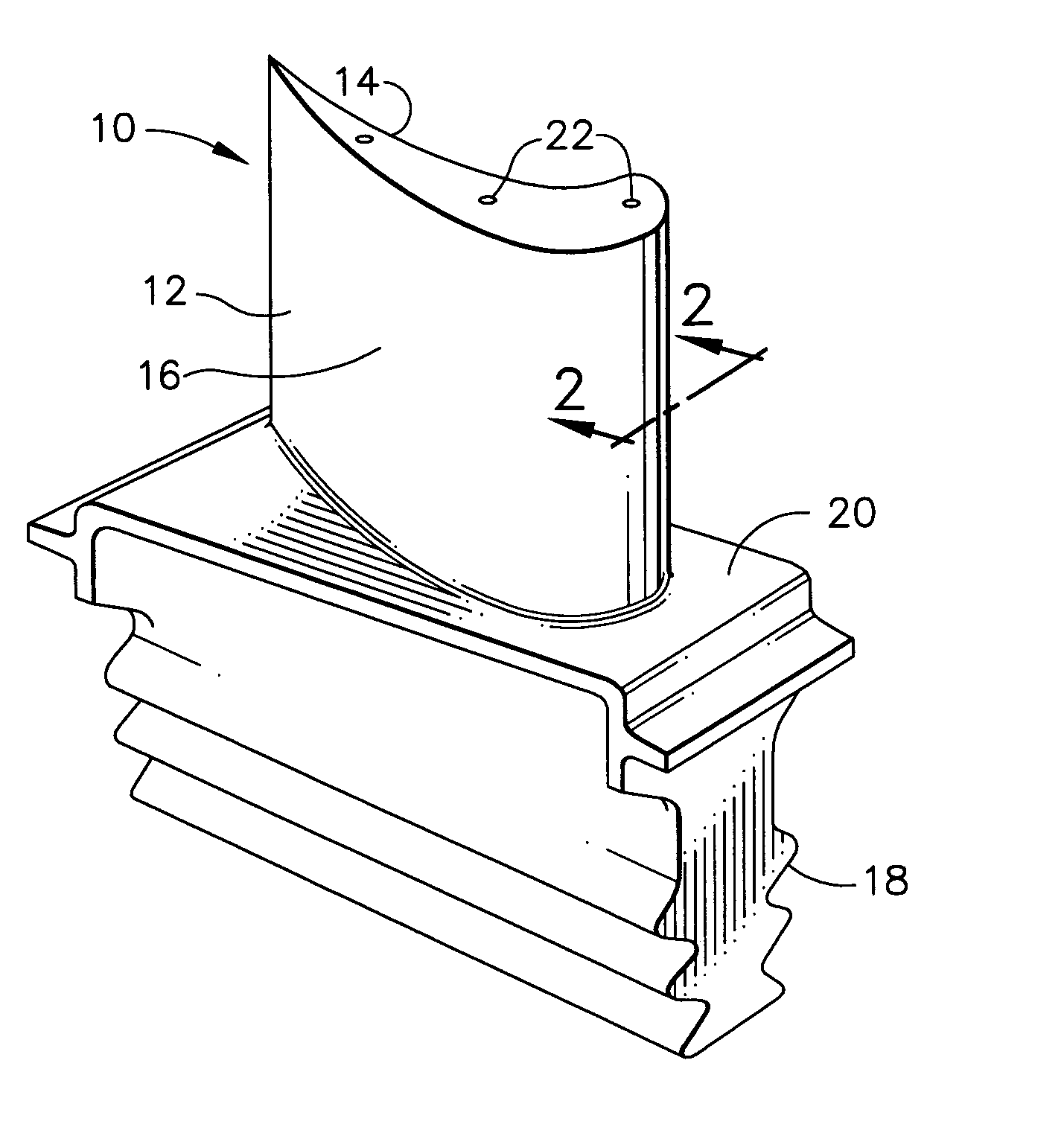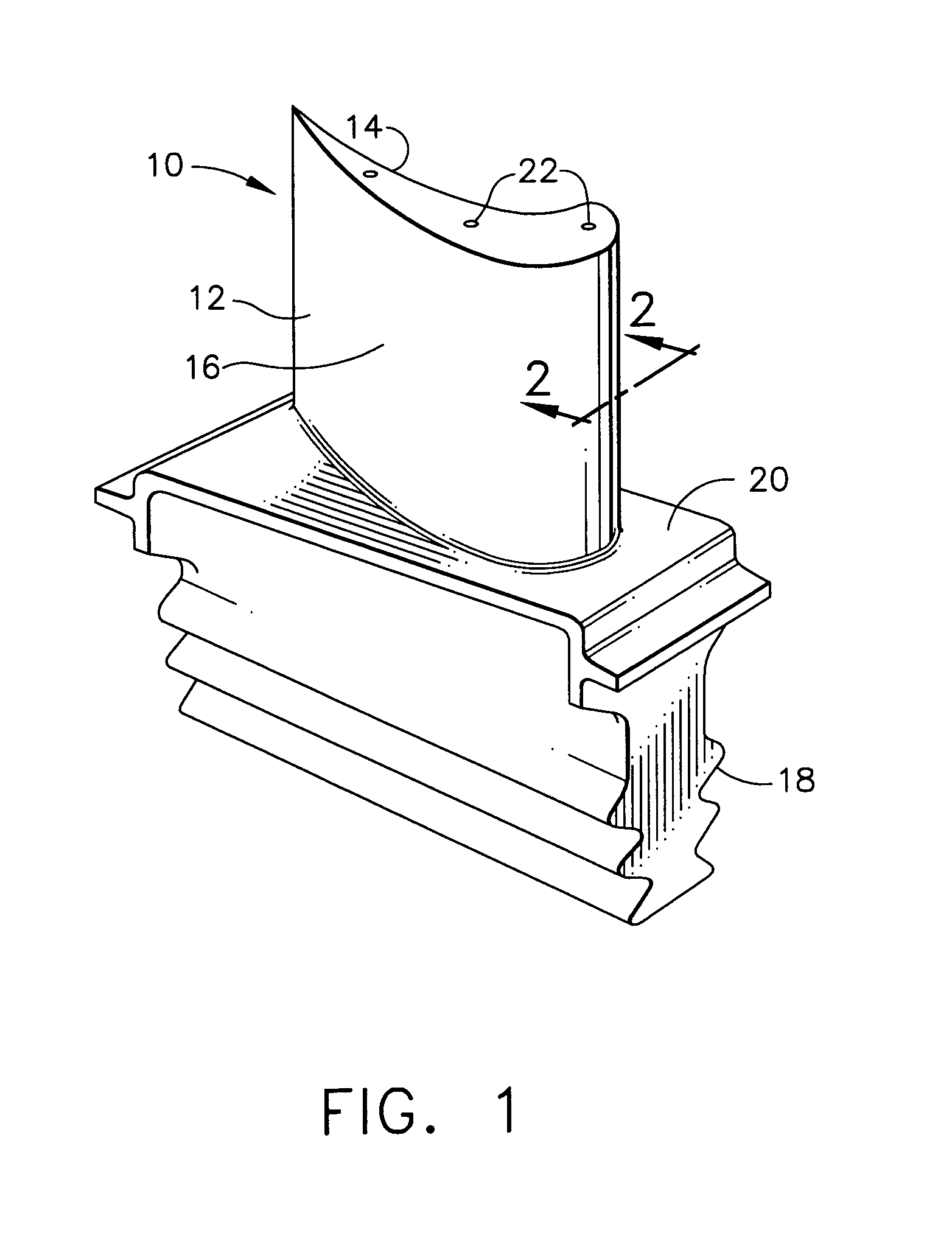Method for restoring portion of turbine component
a turbine component and a technology for restoring parts, applied in the direction of machines/engines, manufacturing tools, superimposed coating processes, etc., can solve the problems of high temperature durability of the components of the engine that must correspondingly increase, alloys alone are often inadequate to form turbine components located in certain sections, and can be susceptible to oxidation or other corrosion problems
- Summary
- Abstract
- Description
- Claims
- Application Information
AI Technical Summary
Benefits of technology
Problems solved by technology
Method used
Image
Examples
Embodiment Construction
[0028] As used herein, the term “wall thickness” refers to the total thickness of the metal substrate in the wall of the airfoil.
[0029] As used herein, the term “repair area” refers to that area of the airfoil from which a coating, such as a diffusion coating, is removed, in whole or in part.
[0030] As used herein, the term “removed wall thickness” refers to that portion of the wall thickness of the metal substrate that is removed when the coating, such as a diffusion coating, is removed.
[0031] As used herein, the term “residual wall thickness” refers to that portion of the wall thickness of the metal substrate that remains after removal of the portion of the wall thickness.
[0032] As used herein, the term “adhered to the residual wall thickness” refers to the applied metal composition becoming combined with, integral with, attached to or otherwise adhered to the residual wall thickness. Typically, the applied metal composition becomes integral with or substantially integral with ...
PUM
| Property | Measurement | Unit |
|---|---|---|
| particle size | aaaaa | aaaaa |
| particle size | aaaaa | aaaaa |
| thickness | aaaaa | aaaaa |
Abstract
Description
Claims
Application Information
 Login to View More
Login to View More - R&D
- Intellectual Property
- Life Sciences
- Materials
- Tech Scout
- Unparalleled Data Quality
- Higher Quality Content
- 60% Fewer Hallucinations
Browse by: Latest US Patents, China's latest patents, Technical Efficacy Thesaurus, Application Domain, Technology Topic, Popular Technical Reports.
© 2025 PatSnap. All rights reserved.Legal|Privacy policy|Modern Slavery Act Transparency Statement|Sitemap|About US| Contact US: help@patsnap.com



